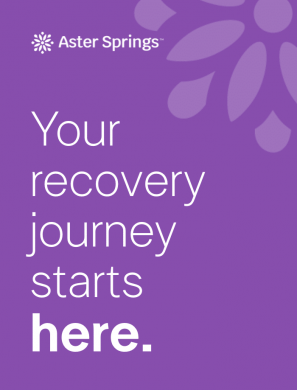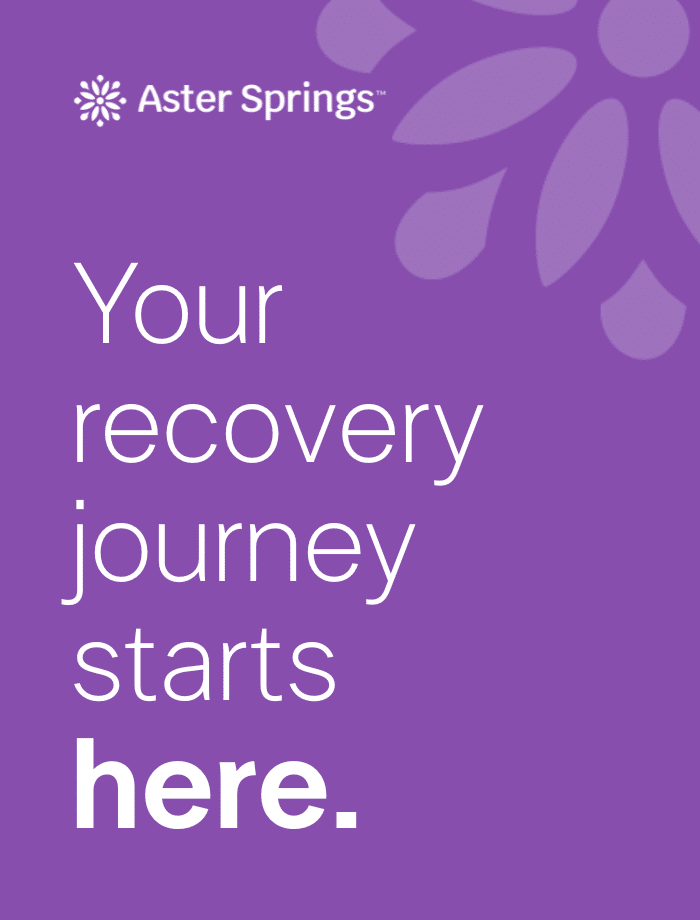Depression and eating disorders often intertwine, with each condition either fueling or masking the other. Understanding this relationship can help individuals and their loved ones recognize the signs earlier, reduce stigma, and find pathways to recovery.
Depression and eating disorders are two of the most common mental health challenges worldwide. They can each be devastating on their own, but when they occur together — as they often do — the impact can feel overwhelming. Many people wonder: can depression cause eating disorders? The answer is complex, but research shows a clear and significant connection between the two conditions.
How Depression Works
Clinical depression is more than occasional sadness; it’s a medical condition that affects mood, energy, and daily life. People with depression may feel persistently low, lose interest in beloved activities, struggle with sleep or appetite, and find it hard to focus or stay motivated. Many individuals with depression have ongoing feelings of worthlessness, shame, and guilt. In severe cases, they experience suicidal ideation (suicidal thoughts).
These symptoms aren’t a sign of weakness or personal failure; they’re the result of a host of factors, including brain chemistry, stress hormone regulation, life circumstances, and thought patterns and emotions.
The American Psychological Association (APA) explains that depression arises from the interaction of several influences:
Biological factors
Biological factors play a big role in depression, but they don’t tell the whole story. Think of them as part of the foundation that can make someone more vulnerable to experiencing depression when stress or difficult life events happen.
Genetics are one piece of the puzzle. If depression runs in a family, the chances of developing it are higher, but this doesn’t mean it’s guaranteed. It simply means the brain and body may be more sensitive to certain triggers.
Brain chemistry is another key factor. Our moods are influenced by neurotransmitters (chemical messengers like serotonin, dopamine, and norepinephrine) that help regulate emotions, motivation, sleep, and appetite. When these systems are out of balance, it can contribute to the feelings of sadness, lack of interest, or low energy that are common in depression.
Psychological factors
Psychological factors — the ways we think, feel, and cope — can strongly shape our risk of developing depression. They don’t cause depression on their own, but they can make someone more vulnerable, especially when combined with stress or biological risks.
For example, certain maladaptive beliefs or styles of thinking are strongly linked to depression. Constant self-criticism, perfectionism, or believing you’re not good enough can make it harder to bounce back from setbacks. Over time, these ways of thinking can wear down resilience and fuel feelings of hopelessness.
Emotional dysregulation — the difficulty in managing, understanding, or responding to emotions — contributes to depression because it makes everyday stress and painful experiences much harder to cope with. Instead of emotions rising and falling naturally, they may linger, intensify, or spiral out of control. Over time, this constant flood of strong negative feelings can wear down resilience, making a person more vulnerable to depression.
Past experiences shape psychological risk as well. Trauma, neglect, or growing up in a highly critical environment can influence how someone views themselves and the world, making depressive thoughts and feelings more likely to take root.
Social + environmental factors
Social and environmental factors (basically, the circumstances of an indivdual’s life and what’s happening around them) can have a powerful influence on the development of depression — but they don’t directly cause depression.
Stressful or painful life events are one of the biggest influences. Experiences like losing a job, going through a breakup, grieving the death of a loved one, or facing ongoing financial strain can put enormous pressure on mental health. When challenges pile up, it can feel harder and harder to cope, opening the door for depression.
Relationships and social support matter, too. Having strong, caring connections can protect against depression, while isolation, loneliness, or ongoing conflict can make it more likely to develop.
Environment plays a role as well. Living with constant stress — such as discrimination, unsafe housing, or lack of access to healthcare — creates conditions that make depression more common. Trauma, whether from childhood or adulthood, is another major risk factor.
It’s important to remember that none of these factors or circumstances are the person’s fault. They’re all part of the broader context of life, and they help explain why depression is so common. Just as important, they show why treatment and recovery are a whole-person journey. Therapy, personal coping strategies, and certain medications can be invaluable tools in managing mental health symptoms. But true lasting recovery often involves building and maintaining supportive relationships, learning how to access needed resources, and creating healthier, safer living environments.
How Depression + Eating Disorders Intersect
Eating disorders and depression can exist on their own, but when they overlap — as they often do — they tend to fuel and intensify each other. Research shows that up to three out of four people with an eating disorder also experience symptoms of depression, making this one of the most common and challenging mental health combinations (Hudson et al., 2007).
One reason they intersect is that both conditions share many of the same risk factors. Low self-esteem, perfectionism, and a tendency toward self-criticism can increase vulnerability to both depression and disordered eating. For some, restrictive eating or bingeing becomes a way of coping with overwhelming sadness, numbness, or stress. For others, the shame and isolation that accompany an eating disorder can deepen feelings of hopelessness, reinforcing depression.
Biology also plays a role. Depression and eating disorders both involve changes in brain chemistry, especially in neurotransmitters like serotonin and dopamine, which regulate mood, appetite, and reward. When these systems are disrupted, it can make it harder to find pleasure in daily life or maintain a balanced relationship with food (Kaye et al., 2013).
The physical consequences of eating disorders can make depression worse, too. Malnutrition from restrictive eating affects brain function, often leading to irritability, fatigue, and mood instability. On the other hand, binge-purge cycles can create feelings of guilt and worthlessness that fuel depressive thinking. It becomes a vicious cycle — depression worsens eating disorder behaviors, and eating disorder behaviors worsen depression.
It’s also important to recognize that the stigma around both depression and eating disorders can make recovery exponentially harder. People often feel they should “just eat something” or “just snap out of it,” which is not only untrue but deeply harmful and dismissive of the psychological and emotional tolls these disorders take. Both depression and eating disorders are serious medical conditions, not choices or personal failings.
Who is Most at Risk?
While these conditions can affect anyone, research shows that some individuals face a higher risk due to a combination of biology, life experiences, and social pressures:
Adolescents and young adults: These are peak years for both conditions to take root. One study found that nearly 30% of adolescent girls with depression went on to develop an eating disorder within four years (Stice et al., 2000).
Women and girls: Rates of co-occurrence are higher among females, partly due to societal pressures around body image, though men and nonbinary individuals are also significantly affected.
Individuals with a family history of mental illness: Genetics and shared environments increase the likelihood of both depression and eating disorders (Hudson et al., 2007).
Individuals with trauma histories: Childhood trauma, abuse, neglect, or bullying raises the risk for both conditions, as trauma can disrupt emotional regulation and self-esteem.
Those with perfectionistic or self-critical personalities: Certain thought patterns and personality traits make it harder to cope with stress and increase vulnerability to both conditions.
In short, anyone can experience depression and an eating disorder, but young people, women, trauma survivors, and those with family histories or certain personality traits are at especially high risk.
Can Depression Cause Eating Disorders?
While depression may not single-handedly cause an eating disorder, it can create fertile ground for disordered eating to take root and thrive. The relationship between depression and eating disorders is complex, but it’s also deeply human — rooted in the ways we cope with pain, seek control, and navigate self-worth. By breaking the silence around these struggles, we can open doors to compassion, understanding, and willingness to seek necessary treatment.
Treatment + Hope
The good news is that effective treatments exist. Addressing depression and eating disorders together — rather than in isolation — tends to lead to better outcomes. Treatments may include:
Therapy – Cognitive behavioral therapy (CBT) and dialectical behavior therapy (DBT) are evidence-based options for both conditions.
Medication – Antidepressants, particularly SSRIs, can help regulate mood and reduce binge-purge cycles for some individuals.
Nutrition support – Registered dietitians specializing in eating disorders can help restore balanced eating patterns.
Community and support systems – Peer support, family involvement, and recovery-oriented communities play a powerful role in healing.
At Aster Springs, we offer specialized treatment for eating disorders and co-occurring conditions, including depression. With personalized therapy, clinical support, and a compassionate team by your side, healing is not only possible — it’s within your reach.
Contact us today to learn more about our treatment programs and take the first step toward a life in recovery.
References
- Hudson, J. I., Hiripi, E., Pope, H. G., & Kessler, R. C. (2007). The prevalence and correlates of eating disorders in the National Comorbidity Survey Replication. Biological Psychiatry, 61(3), 348–358.
Kaye, W. H., Wierenga, C. E., Bailer, U. F., Simmons, A. N., & Bischoff-Grethe, A. (2013). Nothing tastes as good as skinny feels: The neurobiology of anorexia nervosa. Trends in Neurosciences, 36(2), 110–120.
Stice, E., Burton, E., & Shaw, H. (2000). Prospective relations between bulimic pathology, depression, and substance abuse: Unpacking comorbidity in adolescent girls. Journal of Consulting and Clinical Psychology, 68(3), 471–479.



